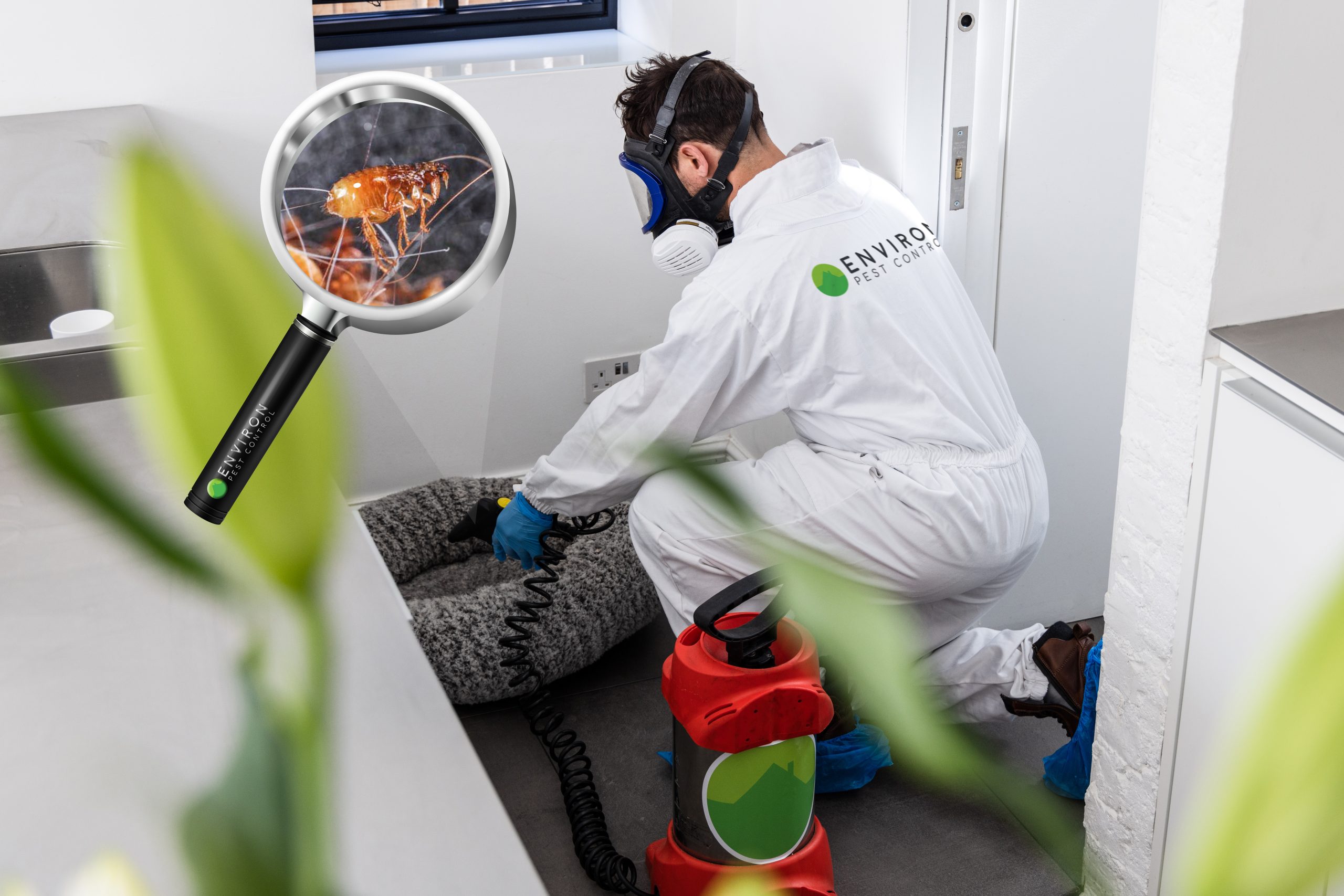Our flea extermination is effective against fleas at every stage of their lifecycle through the use of carpet powders, residual sprays, foggers and – in severe infestations – fumigation.
This treatment is far beyond what you will be capable of doing yourself as we have access to professional-use-only pesticides which are only available to pest controllers with BPCA licenses.
At least three treatments will be provided spread a few weeks apart so we can target any fleas that have hatched between visits or any fresh eggs that have been laid. Beware of pest controllers who promise to treat fleas in a single visit – this will not be effective.
We will assume if you have fleas that the infestation has spread across all soft furnishings. It is best to be thorough, as it only takes a small number of survivors for a flea population to reestablish itself.
Our pest controller will ask that you thoroughly hoover your property every two days between our treatments to trigger the emergence of pupated fleas so that our pesticides will be more effective against them.
It’s very important that you follow our post-treatment recommendations for at least a year to prevent reinfestation from occurring. If you have pets that leave the house, you should consider our recommendations a set part of your housekeeping routine.
As fleas are often tracked inside the house by mice, rats and squirrels, we may also recommend rodent proofing if we discover evidence of a rodent infestation when we treat your property for fleas.
Sick of you and your furry friends getting bitten? Call us now or request your call back and we’ll get rid of your fleas – for good.












